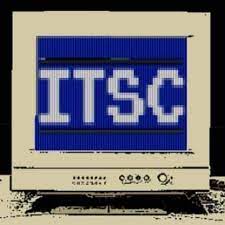Dr Majid Kazmi is Director of Innovation, Research, Digital and Commercial for Cancer & Surgery at Guy’s and St Thomas’ NHS Foundation Trust. The Medical Technology Group sat down with him to discuss opportunities around the NHS Ten Year Plan, how startups and the NHS can better collaborate and the role of clinicians in creating a culture for adopting new innovation.
Can you tell us a bit about your background, your current role, and what you see as some of the challenges in spread and adoption at a local level?
I’m a clinician with over twenty years of specialising in the treatment of blood cancers. My current role really is focused on innovation at Guy’s and St Thomas’s. And that’s probably kind of a consequence of my long-standing interest in how we disrupt pathways. How do we do things differently? How do we get better at what we’re doing for our patients? How do we make their experience better?

What I learned very early in my career is that the technology can only do so much. It’s about how you run a project for successful deployment, how do you meet the milestones, and then how do you actually change cultures and behaviors long term to get people to use it effectively?
One of the first pieces of new technology I oversaw was the implementation of an electronic prescribing system for chemotherapy. We secured around £1.1 million from the local cancer network to roll out the system to our partner hospitals — King’s College Hospital, Lewisham, and Greenwich.
We approached them with a proven solution and the funding. Yet, the pushback, hesitation, and resistance we encountered was eye-opening for me. What seemed like a straightforward, beneficial project quickly revealed a sense of parochialism and reluctance to change. It showed me just how many barriers people can raise, even against what can be good ideas.
How do we create this culture for overcoming hesitation and spreading the implementation of new technology? We talk a lot about spread and adoption from a policy perspective, but day to day, what incentives and levers are available to clinicians to encourage the uptake of a new technology?
One of the biggest challenges in the NHS is the pressure people are under. Most clinicians know the inefficiencies in the system all too well, and they’re often frustrated by them. But recognising a problem is very different from having the energy and resources to fix it.
Changing this means recognising that transformation via technology requires a significant amount of time, money, and effort. Too often there’s an assumption that if you introduce a new technology, people will just adopt it. That, as I discovered, never happens.
You have to create the space for people to engage with it, to understand the benefits, and to adapt their working practices. In the short term, that takes more energy, not less. The problem is that the NHS often works on a one-year business planning cycle, so it’s very difficult to justify investing in something if the benefits are only going to be realised in two or three years.
A key aspect of changing culture and mindset is that you really do have to make it easy for healthcare workers to see the benefits of new technology and demonstrate that it will genuinely improve patient care and free up their time.
One example is a tool called Deontics for multidisciplinary team meetings. MDTs are vital in cancer care, but they’ve become overloaded — sometimes 90 patients in a two-hour meeting. You can’t do those cases justice. So we piloted an AI-based system that could suggest treatment plans based on evidence and guidelines.
In prostate cancer, we found nearly 100% concordance between the tool and our experts, which meant we could remove around 35–40% of cases from discussion. That freed up time for more complex cases, reduced delays for straightforward ones, and gave clinicians and patients a clear evidence base for decisions. Demonstrating the day to day realities of how it will help clinicians is key.
Culturally, there is some shift happening in this respect. Many clinical leaders recognise that the current model isn’t sustainable — simply hiring more staff won’t fix the pressures of an ageing population. The real levers are technology, prevention, and empowering citizens with information to manage their health proactively.
Locally, NHS management can help by creating environments where innovation is nurtured and there is an opportunity for clinicians to feed in. That means dedicated spaces where clinicians, data scientists, engineers and analysts work together on ideas, prototypes, and testing. It also requires a small, but protected, pot of funding — just a few percent of turnover — for innovation, which is something I believe we are seeing in the 10 Year Plan.
In operational performance review meetings, 99% of the discussion will be on current performance and if you’re lucky 1% will be allocated to innovation and transformation. We’ve got to completely change that mindset. We’ve got to just say: “let’s start the conversation on how we can do this differently.”
There’s been so much new policy with the life sciences sector plan and the Ten Year Plan. What do you make of these in terms of the frustrations you’ve just described? Do they address these problems or are they not ambitious enough?
I find them reassuring in one sense. They recognise the key problems and set out potential solutions. Ultimately, the NHS has the building blocks: the talent, the ideas, and the ambition. The real question is whether we are brave enough to execute at pace, take measured risks, and prioritise innovation alongside day-to-day delivery.
That “how” requires brave decisions. For example, Integrated Care Boards were initially designed to hold significant power, but have since been diluted. If we’re serious about deploying technology effectively, it should be done across a sector rather than trust by trust.
For companies, that makes the NHS a more attractive partner — one decision could lead to rollout across four or five organisations. For patients, it creates consistency, avoids duplication, and saves costs. But this only works if central decision-making is backed by funding. Advisory bodies without resources simply don’t deliver change.
We also have quite rigorous procurement rules, which are quite difficult and in my opinion deter the early collaboration we need between clinicians and innovators. Start-up companies will come to me, and say, we’ve got this really great technology, and often it needs a bit of work in terms of co-designing. But refining early-stage products on the NHS carries huge risk for start-ups, because after years of collaboration the NHS may still run an open procurement process and award the contract to the lowest bidder. That discourages companies from co-developing with the NHS, and is often a reason why working with other healthcare systems such as the US can seem more attractive.
Instead, procurement should be embedded from the start: pick partners early, co-develop against agreed KPI that also go beyond just technical evaluation. There’s sometimes more thinking needed on the part of start-ups and industry too. Too many pilots focus on “does it do what it says on the tin? That’s not enough. You need to build in measures of how it transforms pathways, saves money, or improves outcomes. You’ve also got to think about the exam questions a Chief Finance Officer has to answer to sign off a business case.
Then there’s pace. Technology moves fast, and if the NHS insists on waiting for fully “tried and tested” products, it will always be behind. We have to be brave, some risk appetite is essential. Not every pilot will succeed, but if we only adopt technologies once they’re established elsewhere, we’ll never lead. Other regions — the US, the Far East, the Middle East, parts of Europe like Spain and Scandinavia — are already forging ahead, especially in areas like AI. The NHS risks being left behind if regulation and procurement lag too far.
This interview was originally published on the Medical Technology Group website as part of their series of interviews with clinicians, patients, policymakers and healthcare leaders on how to improve the adoption and spread of medical technology and innovation across the NHS.
Related
The post NHS Trust Director on creating a culture for new innovation first appeared on TechToday.
This post originally appeared on TechToday.

